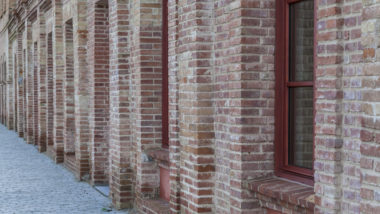More housing, facilities and economic activity in the 22@
The 22@ area is set to get a new boost after provisional approval was given to an Amendment to the Metropolitan General Plan (MPGM). The change will bring more housing, facilities and economic activity compared to the original urban plan from the year 2000, as well as including a feminist urban planning perspective and further pursuing sustainability and better environmental control.
The final document includes criteria from the agreement with local people, social entities, businesses, institutions and universities, and from a participatory process calling for a more inclusive environment, with sustainable economic activity to avoid gentrification and ensure the continuity of local residents. The new urban plan promotes everyday life and a mixed city model to strengthen the area as an economic driver for the city, defining future action in six key areas.
Housing
Housing is one of the biggest priorities in the new focus for the 22@. The area is expected to include 17,000 homes (8,000 more than the 9,000 planned in the year 2000). Over two thirds of these flats (12,000) will be accessible and have official protection, with a third (5,000) as housing for the open market.
The increase in housing will be achieved in various ways. Firstly, and to foster a mixed city, in areas undergoing transformation new constructions will have 30% housing (compared to 10% in the year 2000), with the rest devoted to economic activity. The prevision is also to complete building potential in consolidated areas and foster mixed buildings, combing economic activity with housing. In addition, over a thousand homes still to be transformed will be protected and consolidated, resurrecting historical buildings and the urban landscape of the 22@, along with support for renovations.
Part of the increase in housing and commerce in ground-floor premises will be located in the green streets to be created in the area and on the streets of Pere IV and Àvila. The goal is to generate more community life and citizen activity here, fostering everyday life.
Economic activity
Procedures will be streamlined to activate nearly a thousand square metres (a third of the space planned in the year 2000) still to be developed, generating 60,000 new quality jobs with added value. Some 115,000 people currently work at 11,500 companies in the 22@, representing 11% of the city’s economic activity.
The new plan also updates the permitted uses in production areas to create even more economic activity, with greater diversity and uses linked to everyday life. The document initially approved already added a series of new activities compatible with industry, with these now to be broadened to include activities relating to sport, culture, education, artistic creation, the social and solidarity economy and the green economy.
Environmental quality
The MGPM recognises greenery as a basic need in all planning. Because of this, it creates a network of twelve green streets where 70% of space is for pedestrians and vegetation, along with fifteen new squares at junctions along these same streets. In all, this will create ten hectares of new greenery and comes in addition to the network of streets of this type in the Cerdà street layout in L’Eixample, with 21 green streets and 21 squares to be created following the same philosophy as those in the 22@.
At the same time, environmental parameters will be set to achieve 80% shade in the summer and for sustainable water management.
Protecting heritage
To ensure the continuity of the landscape, the memory and identity of the 22@ neighbourhoods, a diverse series of 450 properties and 20 lanes covering historical routes and paths will be preserved.
Neighbourhood facilities
Fifteen sites around the area with a combined total area of 35,000 square metres are being reserved for new public facilities in the spheres of education, healthcare, culture and sports, as well as a market.
Feminist urban planning
This is the first urban plan to include the gender perspective in its spatial design, along with new aspects addressing the needs of women, men and all collectives equally. This will see the reactivation of empty spaces with temporary uses and transparent fencing, adding urban furniture at street corners and public spaces ensuring the autonomy of dependent people. Ground-floor premises will also be activated to promote local commerce and spaces with simultaneous uses (children’s games, sports, meeting spaces etc.).





